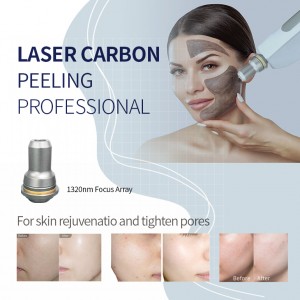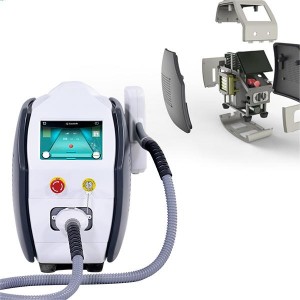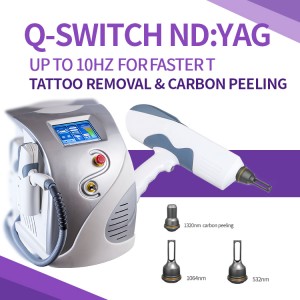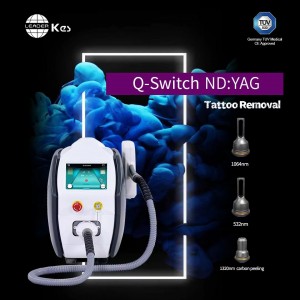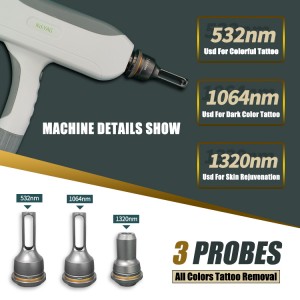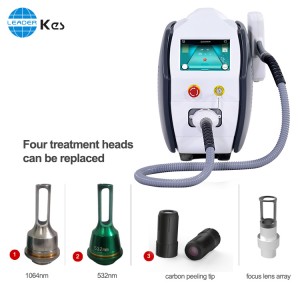Nd YAG Q-switch Picosecond Laser Tattoo Removal Machine
Short Description:
Carbon Peeling and Tattoo Removal Machine
Product Detail
FAQ
Product Tags
Nd YAG Q-switch Picosecond Laser Tattoo Removal Machine
AL1 combines the high power Q-Switched Nd:YAG 1064nm and 532nm wavelength.
AL1 is unmatched in its power and versatility for treating a wide range of aesthetic dermal indications and permanent tattoo
removal.
How Laser Tattoo Removal Works?
The Q-Switched Nd:YAG laser delivers light of specific wavelengths in very high peak energy pulses which are absorbed by the pigment in the tattoo and result in an acoustic shockwave. The shockwave shatters the pigment particles, releasing them from their encapsulation and breaking them into fragments small enough for removal by the body. These tiny particles are then eliminated by the body.
Since the laser light must be absorbed by the pigment particles, the laser wavelength must be selected to match the absorption spectrum of the pigment. Q-Switched 1064 nm lasers are best suited for treating dark blue and black tattoos, but Q-Switched 532nm lasers are best suitable for treating red and orange tattoos.
The amount of energy (fluence/joules/jcm2) is determined prior to each treatment as well as the spot size and treatment speed (Hz/hertz).
To understand an Nd:YAG laser, it helps to know the basic elements. ‘Nd:YAG’ stands for ‘Neodymium-doped Yttrium Aluminum Garnet,’ and ‘LASER’ is an acronym for ‘Light Amplification by Stimulated Emission of Radiation.’ In this type of laser, the atoms in an Nd:YAG crystal are excited by a flashlamp, and the crystal produces amplified light that travels at a specific wavelength – 1064 nm.
The 1064 nm wavelength is outside of the visible spectrum, so the light is invisible and within the infrared range. This wavelength of light has many practical applications.
This type of laser is used for a variety of medical, dental, manufacturing, military, automotive, and scientific purposes. The differences between types of Nd:YAG lasers depends on other factors of the laser system – the amount of power delivered to the flashlamp and the pulse width of the laser output.


